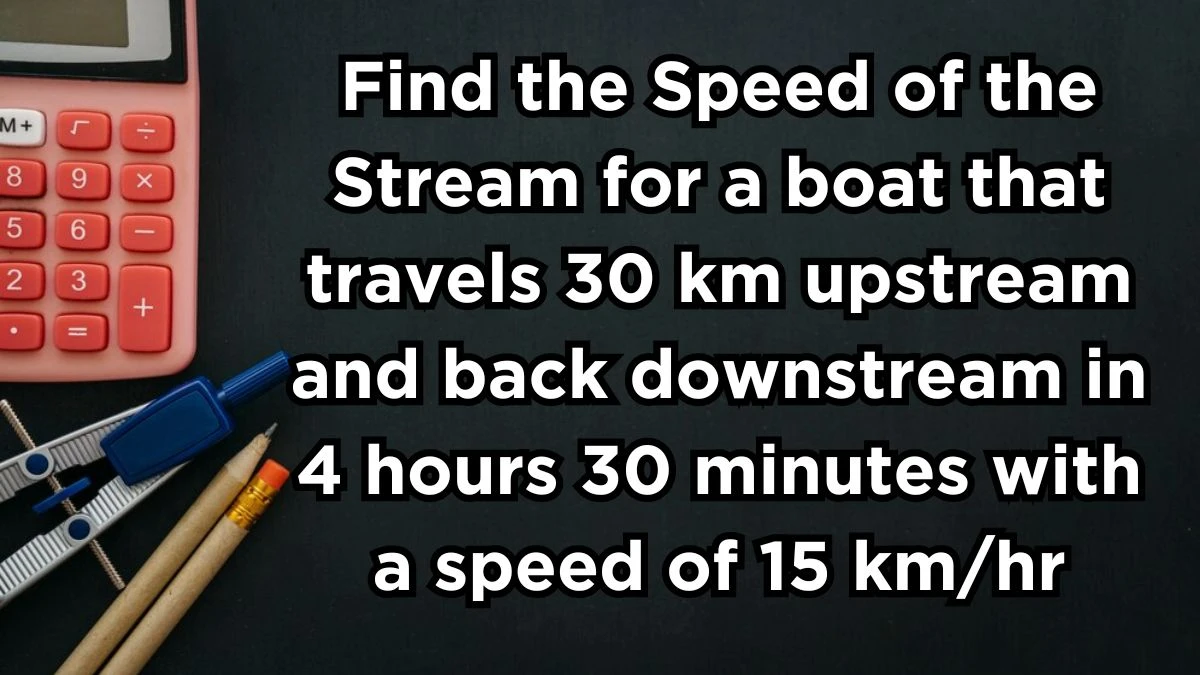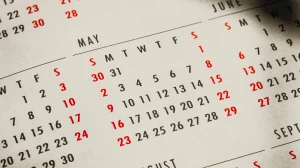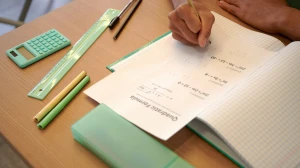Find the Speed of the Stream for a boat that travels 30 km upstream and back downstream in 4 hours 30 minutes with a speed of 15 km/hr
by
Updated Jul 15, 2024

Find the Speed of the Stream for a boat that travels 30 km upstream and back downstream in 4 hours 30 minutes with a speed of 15 km/hr
To find the speed of the stream, the boat's journey upstream and downstream, given its speed in still water, and the total time taken.
Speed of the boat in still water = 15 km/hr
Distance traveled upstream and downstream = 30 km each
Total time for the round trip (upstream + downstream) = 4 hours 30 minutes = 4.5 hours
Let x be the speed of the stream in km/hr.
Speed upstream = 15 - x km/hr
Speed downstream = 15 + x km/hr
Time taken upstream, T1 = Distance/Speed = 30/15-x hours
Time taken downstream, T2 = Distance/Speed = 30/15+x hours
Total time T1 + T2 = 4.5 hours
(30/15-x) + (30/15+x) = 4.5
Multiply through by 2 to eliminate fractions
(60/15-x) + (60/15+x) = 9
After solving the equation,
x² = 25
x = 5 km/hr
Therefore, the speed of the stream is 5 km/hr.
Concept of Speed and Relative Motion
Speed problems in mathematics involve calculating how fast an object moves relative to different conditions such as still water, wind, or current. These problems are common in algebra and arithmetic, requiring the application of basic principles like distance, time, and speed formulas.
Speed is the rate at which an object covers a distance over a given time. In the context of speed problems, understanding how different speeds (like a boat's speed in still water and the speed of a stream's current) affect travel time is crucial. When dealing with speed problems, equations are set up to relate distances, speeds, and times.
For instance, if a boat travels a certain distance upstream against a current and returns downstream with the current, the relationship between the boat's speed in still water and the speed of the current determines the total travel time. Variables are used to represent unknowns, such as the speed of the stream or the boat’s speed relative to different conditions. Constants, like distances traveled and total time, are given in the problem statement and used to derive equations that solve for the unknowns.
Speed problems are not just theoretical exercises but have practical applications in various fields such as navigation, engineering, and logistics. They help in planning routes, optimizing travel times, and understanding how different factors influence transportation efficiency.




